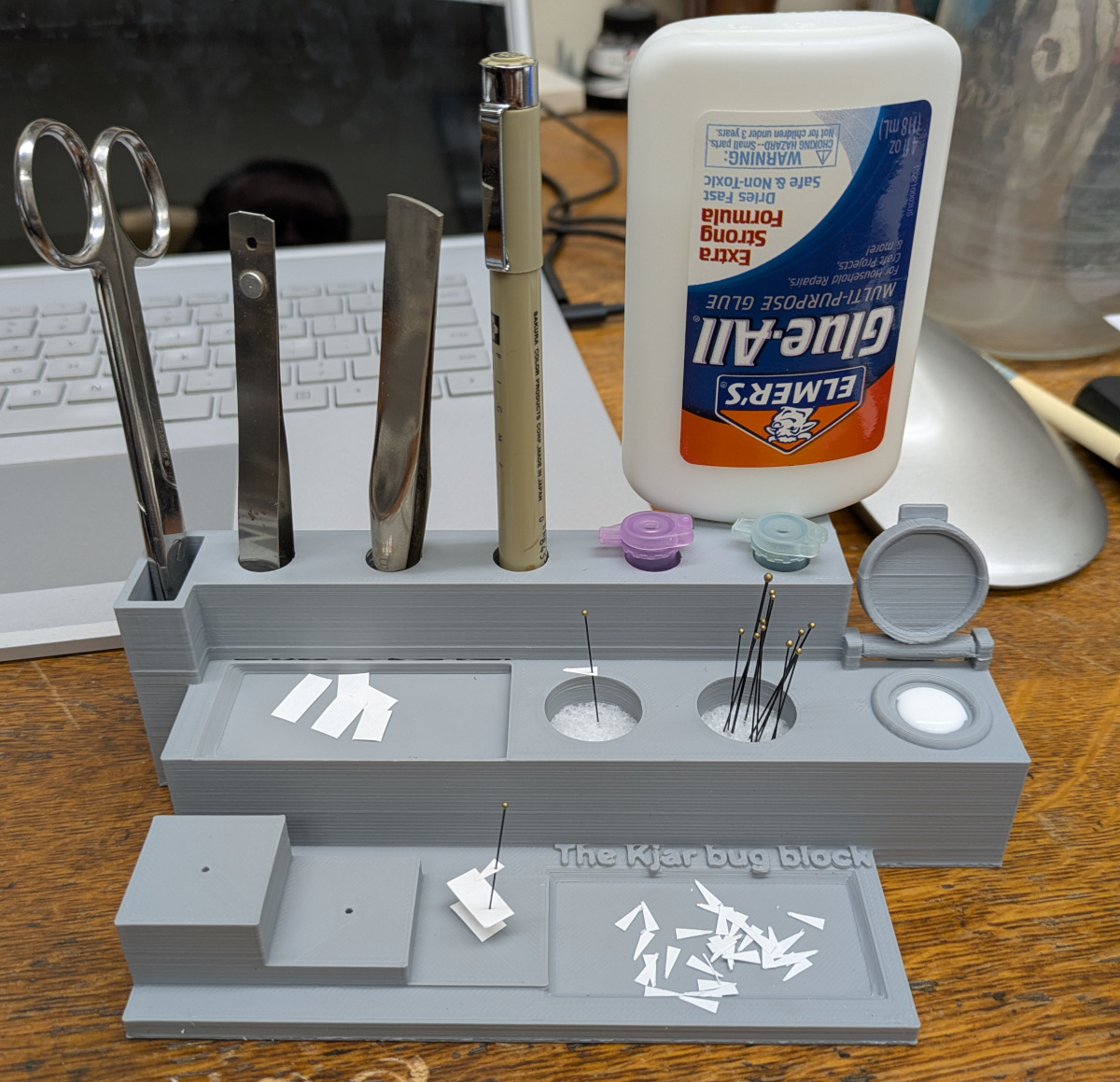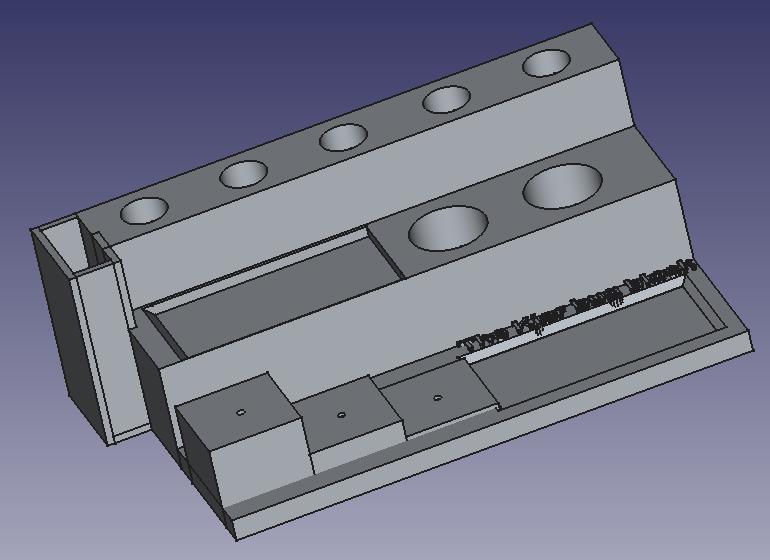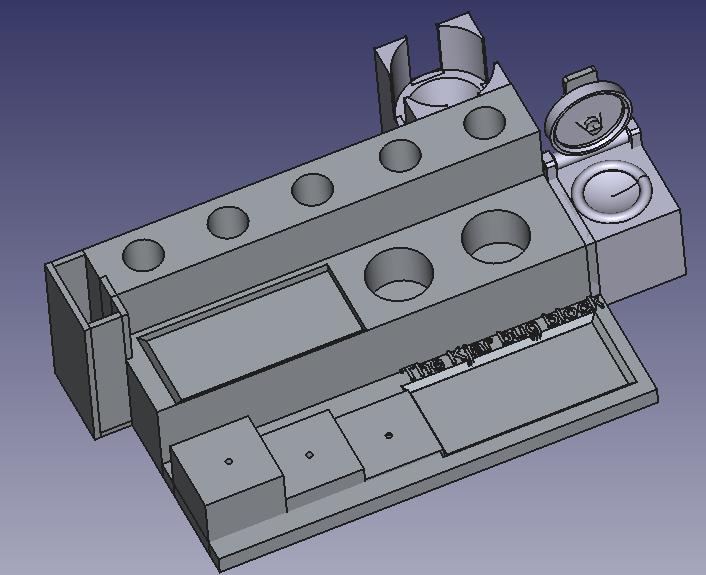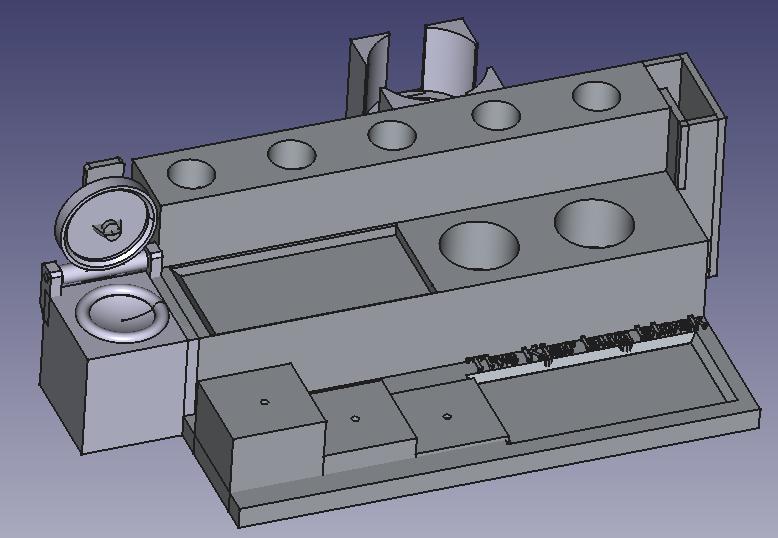I have created "The Kjar Bug Block" to provide several convenient features I have always wanted when pinning insects. The "glue lake" (or as my children call it: "the toilet") on the right or left of the deluxe models will keep glue fresh for over 3 hours if you keep the lid closed between uses. The lake (or bowl) is great for touching a paper point for small specimens. Jim Cane and Sam Droege suggested adding a very interesting and simple piece to this "glue lake". If you are going to do the Michener method where you touch a small amount of glue to the pin and then rest the pin across the side of the specimen (larger ants, bees, etc), there is a prong that emerges from the bottom of the lid that will hold a small amount of glue ready to be touched by the side of the pin. This can be seen in the images of the 3d models below but is not present in the picture of a printed version below. It is included in all deluxe versions.

The large slotted feature on the back may hold a glue bottle upside down to make use much more convienent (remember to close the cap before inserting).
This will also hold test tubes, vials, etc. of a diameter less than 30mm.
The upper row of holes is for tools or microcentrifuge tubes.
The slot on the left (or right in the left handed deluxe model) is for scissors or strips of label paper.
The trays on the middle and the bottom are good for cut labels and points.
You can 'pin' the label or point right in the tray and bring it down to the pinning block built into the bottom level to set the appropriate height. The top level is normally reserved for the point or specimen and the next two levels are usually for setting label heights.
A small circle of foam should be placed at the bottom of the two middle (large) holes. I used the foam from the bottom of a folding insect box, but anything that will hold a pin will work. Make is slightly larger than the hole or simply glue it to the bottom of the hole.
I developed these models using FreeCAD and they may be printed on any consumer or commercial grade printer.
I have been printing them on PLA filament.
These stl files are provided for non-profit personal, academic, and research applications. Non-profit use is encouraged. If you would like to sell these plans, printed models, or derivatives of either, please contact me and we can discuss it (scholarship fund?).



